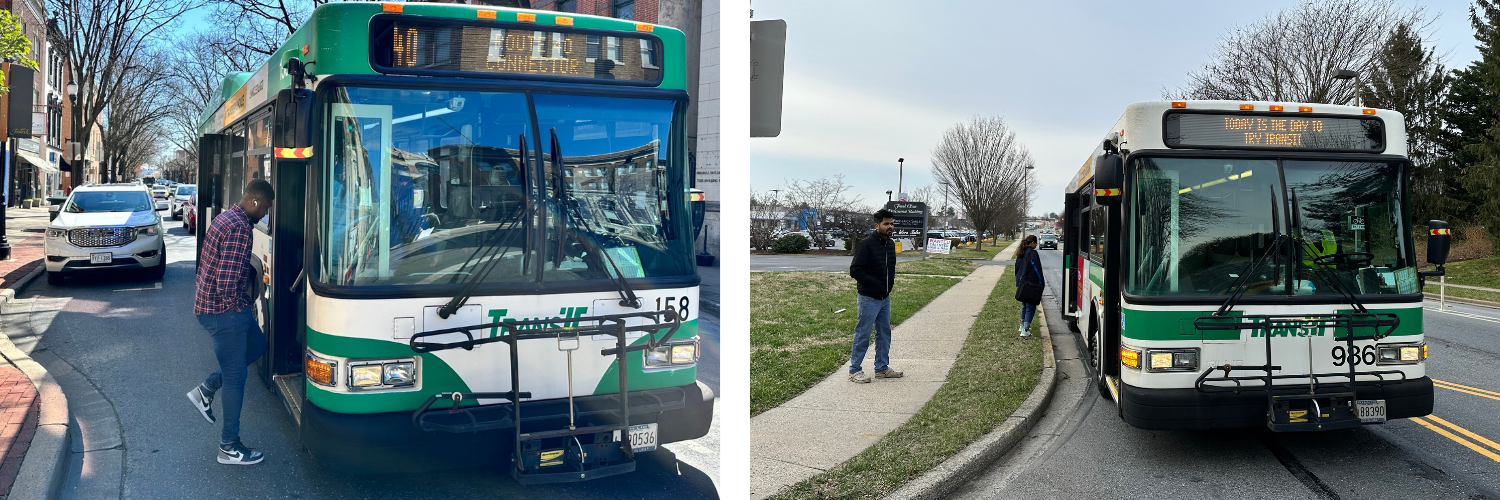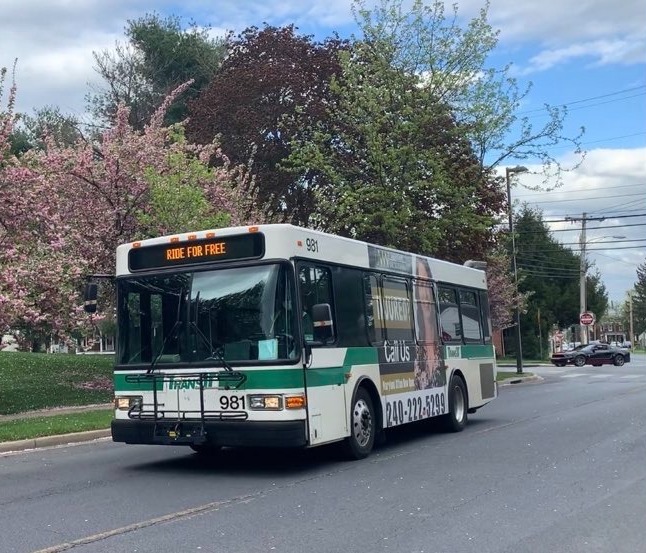"Today is the day to try transit" in your community! (Expanded)

Meeting folks where they are and reminding them of your service to their locations makes a big difference.
Want to re-engage your ridership, build off existing partnerships, and build rapport with new community organizations? Want to do it for less than a hundred bucks?
Transit Services of Frederick County’s “Today is the day to try Transit” campaign is a fresh and energized new way to promote the locally operated transit system in Frederick County, Maryland through our existing social media channels and community partnerships. An award-winning system for operations, Transit’s communications strategy has pivoted after relying for years on overly formal government language and style, and sanitized interactions with the public. Transit’s reach to riders and community members was limited as a result, and the ability to engage with the community suffered. Projects such as service changes or expansions were advertised in challenging to understand and formal language, and programs such as rideshare didn’t strike a chord with the riding public because of the way these programs were presented. We knew we needed to reach folks, but struggled with knowing how to do it. When we had an opportunity to shake things up, we did exactly that.
How did this work?
First, we came up with a catch phrase that was simple and straightforward. Our goal was to share with people that Transit is for everyone, no matter where you’re from or where you’re going. Much of that meant simplifying language, working to build off community events and partnerships where people already were, and explaining why and how decisions were made, all based around the phrase “Today is the day to try Transit.”

Next, the team started with a review of how we discussed service interruptions, like detours, or operational logistics, such as a stop being moved to a safer location. Instead of just posting a detour, Transit shared how the detour was developed, and what goes into determining where the bus can travel, such as the ability to make a tight turn. Transit also showed how we worked with the City and County DPW teams to review and assess decision-making. Same went for stop movements – this is why the stop moved, where the new stop was, and posting walking directions and images to show folks how to connect. We helped break down and define some of the formal jargony terms we’d been using before, like “deadheading” or “terminus”, so that people both felt “in the know” and welcomed into the fold.
Finally, we began engaging with community organizations on social media, such as tagging them in our posts where applicable, or commenting on their posts with Transit directions to their events and activities. Because our service reaches so many groups and organizations throughout the County, it was a breeze to find a County government department that was hosting a food drive, or a Medicaid clinic, or a job fair, and comment on there posts how to get there by Transit. This generated a lot of engagement for both Transit and for other departments, which we expanded to community organizations. How many people in your community know that the bus directly serves the library? Or that folks can get a ride to a workforce services center? Or that you can ride the bus safely home from the restaurants downtown? Maybe fewer than you think! By commenting on other groups’ posts, you can reach their constituents, too, while sharing your own message. Try to ensure you’re commenting on groups that span interests, geography, age, and more to build up your engagement. It can be as simple as commenting on ten posts from organizations and saying “Did you know that the bus goes there? Learn more…” Often times, this initial interaction would result in Transit being invited to the event itself!
This campaign encouraged the opportunity for the public to engage in an easy, non-threatening way. Discussions were had for the first time around common language used in transit operations, like context on why it was challenging to place shelter, and how to connect to regional transportation options. The key to the success of this campaign was the ability to participate in dialogue, rather than simply directing someone to a website. This allowed multiple Transit staff to collaboratively engage in improving our customer service. This required focus on the team’s part, reinforcing the critical notion that riders were the reason that our team exists. It also required a lot of trust and review to ensure that what was being shared on social media complied with policy, was factual, and was appropriately worded.
So, how much did this cost?
The marketing campaign, like our buses, had no cost to ride (or produce)! The goal was to engage in a low-cost, low barrier to entry way that would reach people where they were, and could be replicated in the future. The total cost of the campaign amounted approximately $35 of promoted Facebook posts over the course of 9 months. Staff time was significant, but when divided amongst the team, amounted to less than an hour per week per person, spread out amongst a team of a dozen or more staff taking photos, providing content ideas, and sharing their thoughts on information that they thought riders would want to know. We now have a significant library of transit photos that we can use throughout our publications, too!
How do you make sure that the campaign encourages thoughtful representation and participation across groups in your community?
Historically, the photos used on social media showed the Transit Center, the main point of transfers for the system. There were very few photos of riders or transit buses in historically underserved communities, indicating that the team didn’t make the effort to highlight the system in these locations. Moving forward, there was a deliberate and focused effort to highlight these parts of the system, too, making the content more accessible to and representative of our riders.
How can this marketing campaign be transferred or implemented by other organizations?
We want you to copy this campaign! Legitimately. Take this and use it in your system, too, and let us know how it works and what you learn. It is one of the easiest and lowest cost promotions that can be implemented by transit agencies of any size. Content can be produced by various entities across agencies, and engagement can be driven on important topics. Small agencies, especially, can benefit from a more engaged social media presence because the ability to provide one-on-one customer service is more readily available. To make this campaign successful, organizations must be aware of existing social media policies, or create a social media policy if one does not exist. The team must be willing to share ideas and contents so that the efforts are distributed. It’s especially important to ask your operators, dispatchers, and the folks who answer the phones what types of questions they get - it’s likely that many others have the same questions but don’t know where to look or who to ask. Finally, be willing to take lots and lots of bus photos!

